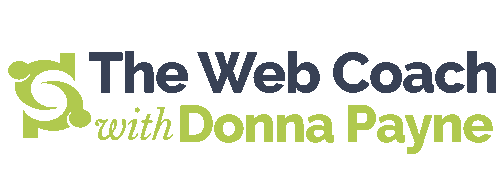1. Make it quick. The speed of the response IS the response. And the medium IS the message. So, even if you don’t have the answer to a question or a problem right away, you can always drop a quick, one-line email that says, “Thanks for letting me know. I’m on it. Call ya this afternoon.”
ASK YOURSELF: Can you respond quicker?
2. Filter. When someone sends you a four-page email loaded with NO line breaks and 48 questions and comments, here’s how to handle it:
a. First, give it a quick once-over.
b. Next, go back and separate each section or question. (See, to make sure you address all of their concerns, you’ll be turning your reply email into a numbered list.)
c. Introduce your list with something like, “Thanks for all of your feedback! I’ve written a response to each of your questions below…”
d. Then, boldface their original thought and write your response underneath. This type of response shows organization AND openness to ALL their ideas.
e. Finally, close with your signature.
ASK YOURSELF: Are you breaking emails down enough?
3. Summary. Next time you have a detailed conversation with someone over the phone, suggest the following: “Hey Mark, I’ve been taking some notes on our conversation. Would you like me to email you a quick, bullet-point list of all the key points we’ve covered, just to make sure we’re both on the same page?” 99 times out of 100, the person will not only gratefully accept, but also be WOW’ed by your listening ability. Not to mention, you’ll have documentation of the conversation for future reference.
ASK YOURSELF: Are you on the same page as your clients?
4. Email introductions. This is a GREAT practice for bringing two people together that should meet, have something in common or can help each other. A few tips for an effective email introduction are:
a. Give a short background on each person.
b. Reference your relationship with each person.
c. Provide phone numbers, websites and email addresses.
d. Keep it short, casual and friendly.
e. Stress the idea of they can help each other or that you think they’d get along great.
ASK YOURSELF: What two people do you know who should meet?
5. Frequency. If you’re one of the Brave Souls who sets a boundary to only check your email a few times a day, good for you. Way to (not) be addicted to your Crackberry! Just remember, accessibility is still important. So, in your email signature, consider letting people know about your new emailing-checking schedule. You may also want to include a number where people can either contact you or someone else who can help them in your e-absence.
ASK YOURSELF: Do you (really) need to check your email as SOON as the plane touches down? Come on, folks. Let it go. There’s no way you’re that important.
6. Fun with From. The “from” line is a PERFECT, yet underused hot spot for the of stamp your personal brand. Let’s say you’re known as “The Tax Law Queen.” Great! Put that instead of [email protected]. It’s guaranteed to stand out among the hundreds of emails in your recipients’ inboxes, and probably get read first.
ASK YOURSELF: What makes your email stand out?
7. Architecture. The human attention span is about six seconds. First impressions occur in less than two seconds. And people receive hundreds of emails a day. So, if you want people to actually READ your letters, the secret is to make your writing easy, quick, fun, approachable and, most importantly, digestible. I call this architecture. And it’s defined as, “The creative design and page presentation of a piece of writing.” For example:
o Make it bold.
o Make it a list.
o Make it italic.
o Make it chunky.
o Make it shorter.
o Make it ALL CAPS.
o Make it underlined.
o Make it b-r-o-k-e-n.
o Make it one word long.
o Make it one sentence long.
o Make it centered on the page.
o Make it bold AND underlined.
Ultimately, if your writing is laborious to get through, readers will just move onto the next email. Besides, people are probably doing three other things while reading your stuff. So, the minute your page presentation starts to bore them, they’ll probably move on.
ASK YOURSELF: 500 emails a day – why would they read yours?
8. Email less often. There’s no need to send piles of emails to your clients, customers and prospects constantly. Once or twice is enough. Any more than that, they’ll either think you don’t trust them, think you don’t have a life or think you’re desperate. (But in all cases, they’ll be annoyed.)
ASK YOURSELF: Do I really need to send another email to this person?
See, whenever someone’s ready to take the next step – to follow up WITH or open up TO you – they’ll do it because THEY want to. Not because you emailed them (again) just to “follow up,” “see if they have any further questions” or “check in to see how it’s coming along.” Easy, Dilbert. They heard you the first time. Have a little faith. When they want you, they’ll find you. Patience.
© 2008 All Rights Reserved.
Scott Ginsberg, aka “The Nametag Guy,” is the author of seven books, an award-winning blogger and the creator of NametagTV. He’s the only person in the world who wears a nametag 24-7 and teaches businesspeople worldwide about approachability. For more info about books, speaking engagements or customized online training programs, call 314/256-1800 or email [email protected].

